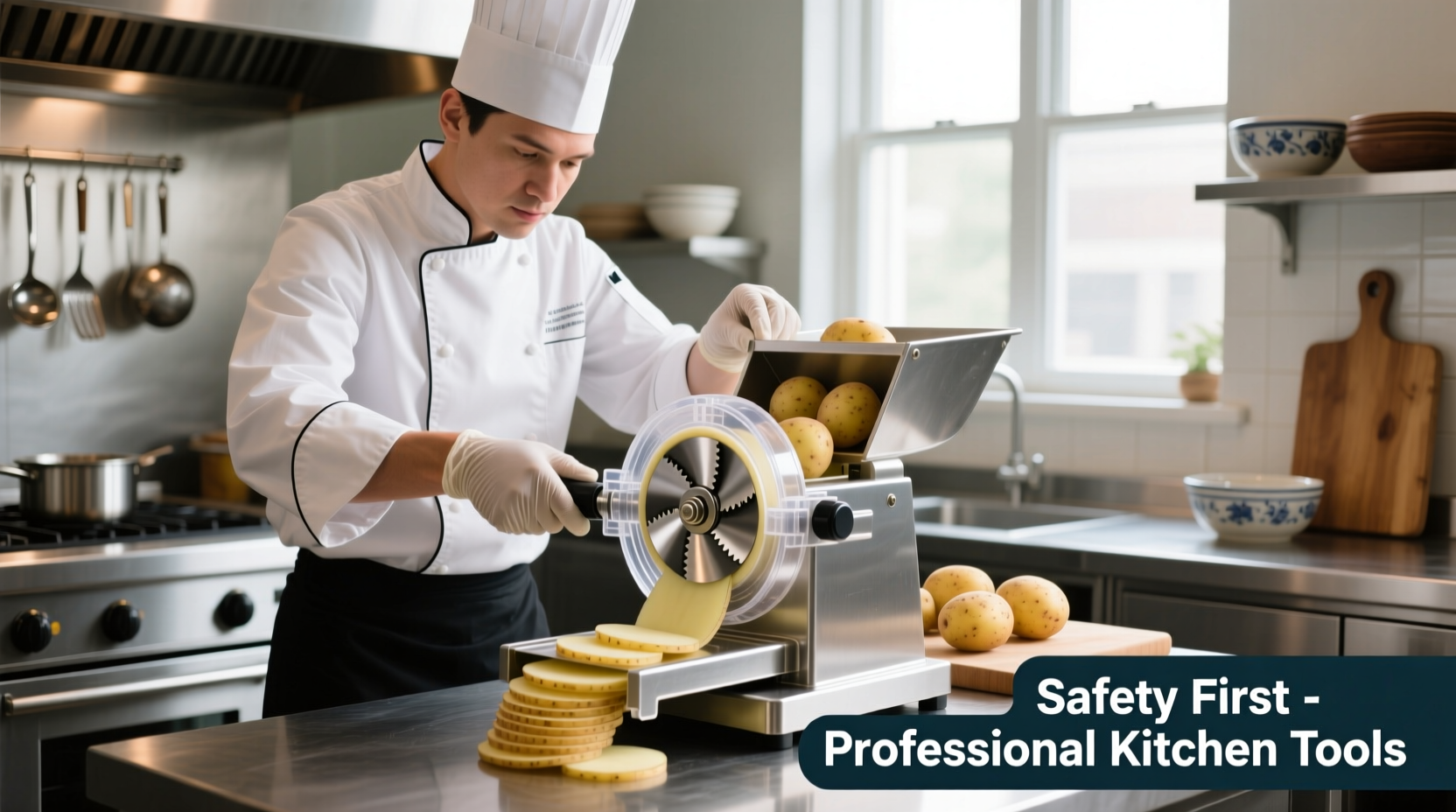Discover how the right potato cutter can transform your meal prep from a tedious chore into a quick, enjoyable process. This guide reveals professional techniques that ensure perfect cuts every time while minimizing kitchen accidents. Whether you're meal prepping for a family or crafting restaurant-quality dishes, understanding potato cutter options helps you work smarter in the kitchen.
Why Your Current Potato Cutting Method Might Be Holding You Back
Most home cooks waste valuable time manually chopping potatoes, resulting in uneven pieces that cook inconsistently. Professional kitchens achieve uniform cuts through specialized tools that maintain texture and cooking properties. The difference between haphazard chunks and precise cuts affects everything from cooking time to final presentation.
| Type | Best For | Safety Level | Cutting Precision |
|---|---|---|---|
| Manual Rotary Cutters | Home kitchens, occasional use | High (with guard) | Moderate to High |
| Mandoline Slicers | Professional results, frequent use | Low (requires careful handling) | Very High |
| Electric Cutters | Large batches, commercial use | Moderate (safety features vary) | High |
| Box Graters | Shredding only, limited use | Moderate | Low |
How to Select Your Ideal Potato Cutter: A Practical Framework
Consider these three critical factors before purchasing any potato cutter:
1. Match the Tool to Your Actual Cooking Patterns
Track your potato usage for one week. If you prepare potatoes less than three times weekly, a compact rotary cutter provides sufficient capability without cluttering your kitchen. Frequent users preparing multiple potato dishes benefit from mandoline slicers' versatility. The safety considerations become increasingly important with usage frequency.
2. Understand Material Quality Indicators
Stainless steel blades maintain sharpness significantly longer than carbon steel alternatives. According to culinary equipment standards from the American Culinary Federation, professional-grade cutters use 420-series stainless steel with Rockwell hardness ratings between 54-58. Home models should feature at least 304-grade stainless steel for corrosion resistance during regular washing.
3. Evaluate Storage and Cleaning Requirements
Measure your available drawer space before purchasing. Many users overlook that mandoline slicers require dedicated vertical storage to protect blades. Rotary cutters with removable blades offer easier cleaning but create additional small parts to store. The National Kitchen and Bath Association recommends allocating 8-10 inches of vertical space for safe storage of cutting tools.

Safety First: Critical Practices Every Home Cook Should Know
The Consumer Product Safety Commission reports over 15,000 emergency room visits annually related to kitchen cutting tools. Most incidents involve mandoline slicers where users bypass safety guards. Implement these evidence-based safety measures:
- Always use the food holder - your fingertips are worth more than perfect cuts
- Clean cutters immediately after use when starch hasn't hardened
- Store blades separately from the main unit when not in use
- Replace blades when cuts become uneven (typically after 12-18 months of regular use)
Mastering Professional Cutting Techniques at Home
Follow this step-by-step process for restaurant-quality results:
- Wash potatoes but don't peel (skin provides structural integrity during cutting)
- Trim ends to create stable flat surfaces
- Adjust cutter blade to desired thickness (1/8" for fries, 1/4" for roasting)
- Apply firm, consistent pressure through the entire cutting motion
- Immediately transfer cut potatoes to cold water to prevent oxidation
This technique preserves potato texture while ensuring even cooking. Chefs at the Culinary Institute of America recommend changing water every 30 minutes when prepping large batches to maintain optimal starch levels.
Creative Applications Beyond Basic Potato Prep
Expand your culinary repertoire by using your potato cutter for:
- Julienning firm vegetables like zucchini for stir-fries
- Creating uniform apple slices for pies and tarts
- Preparing consistent carrot coins for soups
- Cutting sweet potatoes for even roasting
- Creating decorative vegetable garnishes
Remember that softer vegetables like tomatoes require a very sharp blade and light pressure to prevent crushing. The texture transformation from manual chopping to precision cutting affects both cooking time and final dish presentation.
Maintenance Checklist for Long-Lasting Performance
Extend your cutter's lifespan with these professional maintenance steps:
- Hand wash only - dishwasher heat warps plastic components
- Dry thoroughly before storage to prevent rust
- Apply food-grade mineral oil to metal parts monthly
- Store blades separately in protective cases
- Replace plastic components showing cracks or warping
Proper maintenance ensures consistent performance and prevents food safety issues from deteriorating equipment. The Food and Drug Administration's kitchen equipment guidelines emphasize that damaged cutting tools can harbor bacteria in microscopic cracks.
Frequently Asked Questions
What's the safest potato cutter for beginners?
Manual rotary cutters with full-hand guards provide the safest option for beginners. These models keep fingers completely away from blades while requiring minimal technique. Avoid mandoline slicers until you've developed proper handling skills, as they account for 68% of potato cutter-related injuries according to Consumer Product Safety Commission data.
How often should I replace my potato cutter blades?
Replace blades when you notice uneven cuts or increased effort required. For home use (2-3 times weekly), quality stainless steel blades typically last 12-18 months. Commercial kitchens replace blades every 3-6 months. Dull blades increase accident risk as users apply excessive pressure during cutting.
Can I use a potato cutter for sweet potatoes?
Yes, but select appropriate settings. Sweet potatoes require slightly thicker cuts (1/4" minimum) due to their density. Soak sweet potatoes in cold water for 10 minutes before cutting to reduce stickiness. Use firm, steady pressure rather than forcing the vegetable through the cutter to maintain blade alignment.
Why do my cut potatoes turn brown so quickly?
This oxidation occurs when potato enzymes react with air. Immediately submerge cut potatoes in cold water with a tablespoon of vinegar or lemon juice per quart. Change the water every 30 minutes for best results. The Culinary Institute of America recommends this method maintains texture while preventing discoloration during prep.











 浙公网安备
33010002000092号
浙公网安备
33010002000092号 浙B2-20120091-4
浙B2-20120091-4